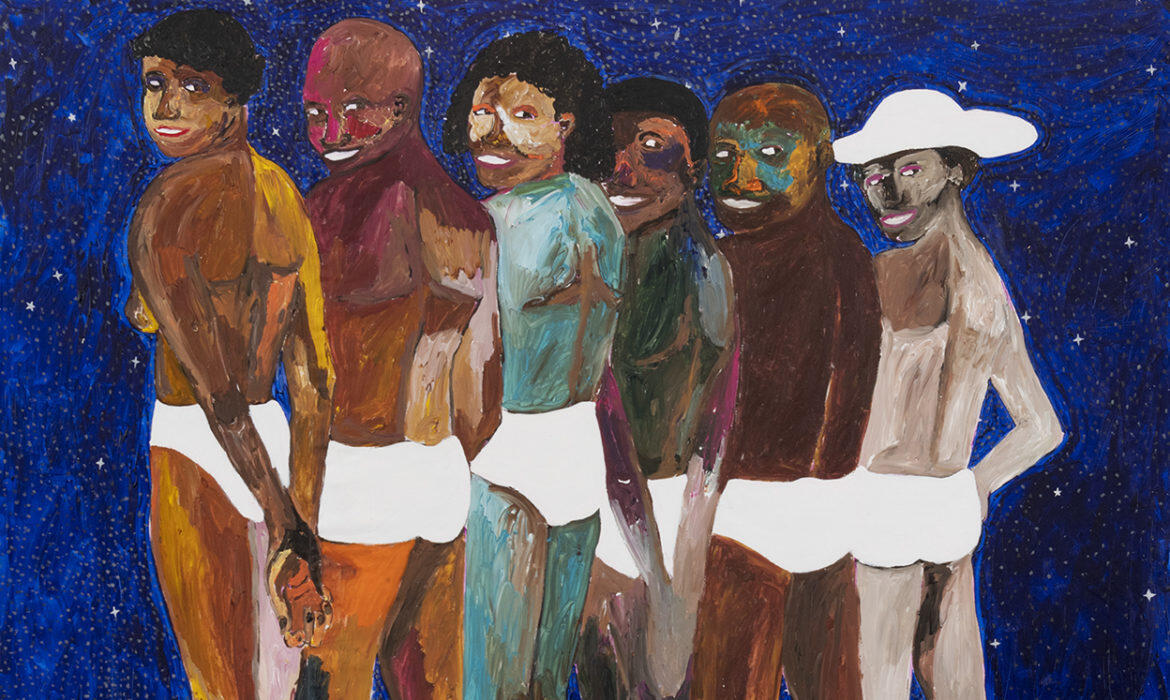
Feb. 16, 2022
ICA at VCU announces spring schedule
Share this story
The Institute for Contemporary Art at Virginia Commonwealth University’s spring schedule includes concepts of Ghanaian cultural memory, pedagogy and art education, and experimental printmaking techniques.
“Forgotten, Nudes, Landscapes,” the first institutional solo exhibition of Ghanaian artist Gideon Appah, will be on view from Feb. 19 to June 19. Comprising paintings, drawings and media ephemera, the artist’s latest body of work chronicles the cycle of cultural memory — from heyday to bygone — through a series of portraits featuring figures illustrious and figures forgotten. For these dynamic tableaus, Appah used newspaper clippings, entertainment posters and films spanning the 1950s through the 1980s as source materials to explore the rise and fall of Ghana’s cinema and leisure culture.
The artist’s visual vernacular is traceable through striking scenes from public and private life, unraveling both intimate and collective forms of personhood. Many figures are painted smoking, both as an homage to nightlife culture and, perhaps, as an omen of eventual decay. Appah’s work speaks to a sense of loss, from the death of cinema to the death of democracy itself, while working through that loss to generate something dreamlike and intangible.
Luis Camnitzer’s site-specific “A Museum is a School” installation opens Feb. 24 on the Belvidere Street-facing side of the Markel Center.
What does it mean to work at the intersection of public education and contemporary art? For more than half a century, Camnitzer has been pondering the same question. Working in printmaking, sculpture, language and installations, Camnitzer’s work investigates how power is employed and can be challenged in society.
The title of the work invites the audience to reflect on the museum as a space for education. The subtext, “The artist learns to communicate, the public learns to make connections,” gives specific roles to artists and audiences, establishing them as colleagues in a collaborative process. “A Museum is a School” understands art to be a dynamic process rather than a product and emphasizes the museum as a forum for exchange.
“Aquí Me Quedo/Here I Stay,” opening later this spring, introduces Central American and Caribbean artists Sila Chanto and Belkis Ramírez in powerful dialogue, emphasizing their shared exploration of patriarchal violence, power and conflicting expectations of the female form.
“This two-person exhibition proposes, for the first time, a conversation between these two powerful feminist voices, stressing Chanto and Ramírez’s remarkable intervention into misogynistic violence and masculine control,” said guest curator Miguel A. López. “Their work not only builds on their own visual language, which revolutionized printmaking and went beyond regional conventions — defying the local hegemonies of painting and sculpture — but also pushed past the dominant male culture and its gender-biased structures of valorization, giving us something wholly new.”
Chanto’s iconoclastic printmaking techniques involved scale, material and installation previously unimagined for the form — imparting embodied memories onto the public spaces around her by demarcating the body’s affective trace. In contrast, Ramírez’s technically masterful printmaking and wood engraving often combined figuration and abstract patterning to explore the vulnerability of the body through the collision of public and private as they delimit the individual.
“Test Pattern,” which invites visiting artists to use the ICA auditorium as an experimental production studio, inspired by the legacy of public access TV, premieres March 25.
The series includes live tapings and online streams of performances exploring technology, sexuality, labor and power. Spring artists include DJ and theorist DeForrest Brown Jr., new media artist Shawné Michaelain Holloway, and poet, musician and activist Moor Mother.
Subscribe to VCU News
Subscribe to VCU News at newsletter.vcu.edu and receive a selection of stories, videos, photos, news clips and event listings in your inbox.







